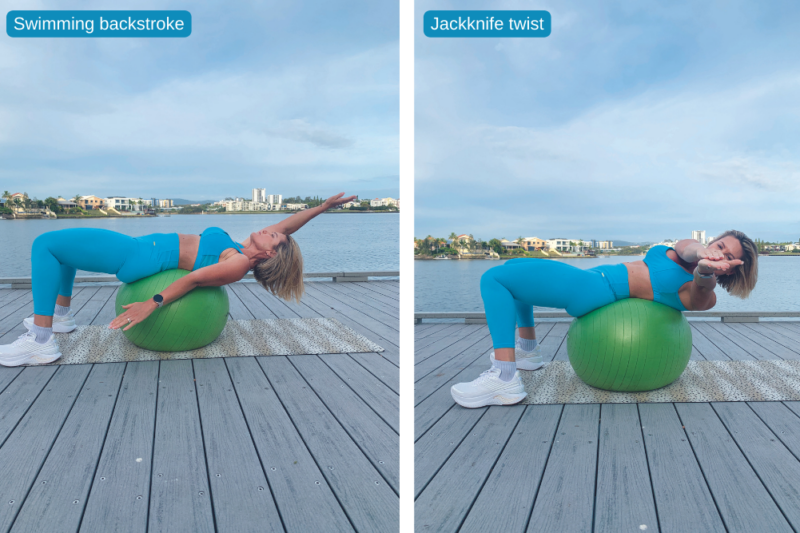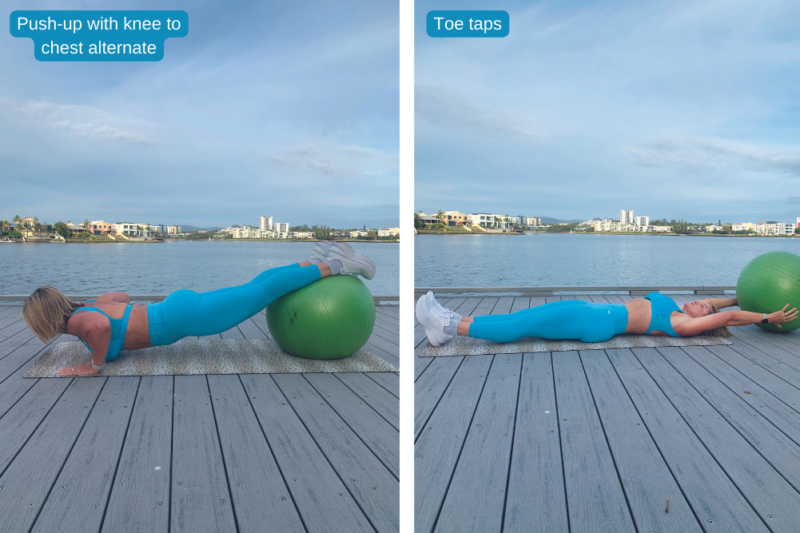It’s time to talk midsection mobility
Our daily movement has changed, and we now need to move our midsection habitually. Our midsection mobility is central to a supple spine. To ensure you maintain your spine health, you must twist and turn through movements daily that ignite the core and trunk muscles.
Our spine gives our body structure and support. It allows the body to move freely and to bend with flexibility. The nervous system uses the spine to transmit electrical impulses resulting in the sensory information for the body to function. When our body sustains limited movement in the spine and core, these impulses are slower, making us feel sluggish, unfocused and unstable. Our posture subsides and we tend to get pains in the hips and shoulders, and we become noticeably thicker in our middle.
You’ve probably heard a trainer say: “Brace your core, engage your abs, stable midline.” For many, the core is a mythical section of the body. To simplify, the core consists of not just the front section of six muscles often referred to as a six-pack or a keg, depending on your level of thickness in that area. But the trunk or core is more complex than you might realise. Your abs alone include four different abdominal muscles, and then there are all the trunk and back muscles to account for which also help to ensure strength, alignment posture and overall mobility of the spine.
Engaging your core decreases your chance of sustaining an injury while working, exercising or even sitting. It creates a stable mobile ring of musculature around our spine that keeps the vertebrae from flexing or extending too far, as well as from bending too far to one side or the other. However, these muscles also become immobile and painful when not used or manipulated enough and cause seizing, stiffness and fatigue.
Muscles
These are the three most important muscles when it comes to engaging your core.
Rectus abdominis: The most well-known abdominal muscle group, the rectus abdominis is the muscle responsible for the six-pack. It’s a long, flat muscle that extends from your pubic bone to your sixth and seventh ribs. Your rectus abdominis is primarily responsible for bending your spine.
External obliques: These are the muscles on either side of your rectus abdominis. Your external obliques allow you to twist the torso and bend sideways, flex the spine and compress your abdomen. This is the main set of core muscles that fail to ignite due to more sitting being the normal life.
Internal obliques: These internal obliques lie just below the external obliques. They have the same function and are the “deep sleepy core muscles”: these are the ones we will be focusing on in this month’s workout.
In this workout you’ll learn what it really means to feel engaged by lengthening and extending the core abdominals and back muscles in a supported manner. These nine exercises will release and strengthen the lacklustre muscles in and around the trunk area. The glutes will ensure a stabilised pelvis as you lunge and use your external and internal obliques to twist side to side. You will also find some exercises with the fitball, medicine ball and roller as this will ensure you get faster results.
Complete the exercises as often as needed. Always begin with a warm-up walk, run or series of side steps for approximately 30 minutes. Complete three sets of each exercise and 10–16 repetitions depending on level of fitness.
Fitball core rotations

1 Swimming backstroke
Begin by lying on the ball and rotate the centre of the body. Feet are wide apart to balance the ball in the shoulder blades. Begin rotations, one arm going backward as though completing a backstroke and pause. Repeat on the other side. Only go as far as you can — this is a progressive and purposeful session to improve weekly.
2 Jackknife twist
Begin lying on the ball and rotate the centre of the body. Feet are wide apart to balance the ball in the shoulder blades. Begin rotations and pause. Only go as far as you can — this again is progressive and purposeful to improve week by week. Add a hand weight for the more experienced.
Fitball core movement


3 Push-up with knee to chest alternate
Begin by planking with the fitball upon ankles or shins. Pause in plank upon the ball and complete a push-up upon reaching the plank position, then pull the ball with toes toward as you move your knee to elbow. Hold and pause; repeat the combination.
4 Toe taps
Begin flat on your back and hold ball in hands. Then raise legs upwards to V position. Meet the ball with toes. Repeat.
5 Fitball Roman twist
Sitting in a V position with knees bent, rotate the fitball or medicine ball in a Roman twist. Ensure a balance is formed by stabilising the sitting bones upon the floor. Focus on the shoulder and knee position being aligned.
Balance and core

6 Base
Begin a in kneeling push-up position. Place one hand upon the roller and lift right arm up and hold. Bring right arm down and stabilise upon the roller. Lift left arm up and reach forward in a straight line from shoulder to nose.
7 Extension
Begin in a plank push-up position. Place one hand upon the roller and lift right arm up and hold. Bring right arm down and stabilise upon the roller. Lift left arm up and reach forward in a straight line from shoulder to nose. This a tricky one as it requires all the core abdominals to be on.
Foam roller

8 Single-leg raise with knee tap
Begin in a lying flat position on the mat. Hold the foam roller above the head with equal hold with hands. Lift one straight leg and bring the roller to meet the knee or bend one knee. Repeat.
9 Roll-out
Lie upon the roller with bent legs and allow all the muscles to be supported and pushed out. Roll along the spine up to the neck and to base of spine, beginning with the hips.
Is your core turned on?
- Some of the most common examples of failing to engage your core are:
- Your back slumps while sitting down.
- To get up from the floor you must roll over to your knees.
- Your lower back rises from the ground when trying to “hollow” your body.
- You struggle to bend or lean far to one side, such as when you drop something on the floor in the car.
- You lose balance when performing single-leg exercises or often trip on unstable ground.
- Your back arches while you perform push-ups or shoulder presses.
- If you nodded to any of these then it’s time to retrigger those deep-core muscles and wring out that spine.








